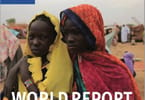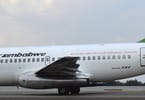Oman’s tourism industry has continued its rapid growth, assisted by the government’s long-term economic plan to diversify income sources, in the light of expected declining oil and reserves over the next few years. As part of government’s plan, called Vision for Oman’s National Economy: Oman 2020, the Ministry of Tourism aims to attract 12mn visitors by 2020. The tourism industry is expected to become one of the largest contributors to GDP by then. The World Travel & Tourism Council (WTTC) expects the industry to grow from 1.5% of total GDP in 2010 to 2.4% of GDP by 2020. The contribution to the economy by tourism-related activity is expected to increase from 7.6% of GDP in 2010 to 9.2% of GDP by 2020.
Oman has been investing heavily in tourism, especially in infrastructure and airports. Three new airports will be built to boost the industry and the government is spending at least US$3.2bn upgrading its gateway airport, Muscat International Airport.
Oman specialises in ecotourism and first class tourism, but increasingly it has to compete with other Middle East destinations that offer similar experiences for Western and regional tourists. Security and political issues in the Middle East also pose continuing threats to the tourism industry across the region. Of most concern to Oman, there is the unpredictability of the West’s standoff with Iran, as well as the possible establishment of radical Islam, which could spread from neighbouring Saudi Arabia. On the positive side, Oman is well regarded as a place for conducting business and it has, compared to other countries in the Middle East, a relatively low level of corruption. It has good relations with the US, the UK, India and China.
Economically, with oil and gas accounting for about 75% of Oman’s total exports, we hold on to our positive outlook regarding its further economic development over the medium-term and forecast 4.4% real GDP growth for 2010. We forecast a 37.7% increase in export revenues in 2010, 80% of which will be due to oil and gas shipments, which will increase in volume as well as in price.
We expect growth in the non-oil sectors, including tourism, to recover gradually, picking up speed from 2011. The government’s investment plans in tourism and other sectors continue to reduce the country’s exposure to oil price volatility. Although oil resources are expected to start declining from 2011, we maintain our positive stance in relation to Oman’s growth outlook over the medium term and are encouraged by the several enhanced oil recovery projects being undertaken by the government, as well as its diversification drive.
WHAT TO TAKE AWAY FROM THIS ARTICLE:
- Although oil resources are expected to start declining from 2011, we maintain our positive stance in relation to Oman’s growth outlook over the medium term and are encouraged by the several enhanced oil recovery projects being undertaken by the government, as well as its diversification drive.
- On the positive side, Oman is well regarded as a place for conducting business and it has, compared to other countries in the Middle East, a relatively low level of corruption.
- Of most concern to Oman, there is the unpredictability of the West’s standoff with Iran, as well as the possible establishment of radical Islam, which could spread from neighbouring Saudi Arabia.






















